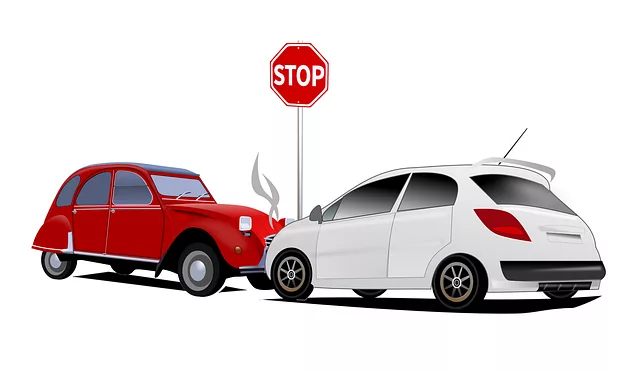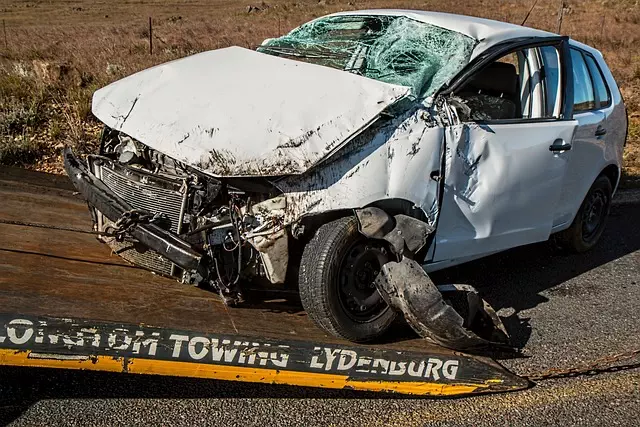Cyclist safety in New York City is governed by laws mirroring those for motorists, with equal rights and responsibilities, especially regarding traffic signals. In Manhattan, cyclists face unique challenges like inadequate infrastructure, driver negligence, adverse weather, and pedestrian hazards, contributing to severe injuries, including closed head injuries (CHIs). Legal options exist for compensation if CHIs result from another party's negligence; building a strong case requires medical documentation, witness testimonies, expert opinions, and navigating legal complexities with specialized attorneys. After an accident, immediate medical attention, thorough incident documentation, and consulting legal experts are crucial steps toward recovery and financial compensation, especially for CHIs in NYC.
“In the bustling city of Manhattan, where cyclists navigate amidst towering skyscrapers and heavy traffic, understanding and enforcing cyclist safety laws are paramount. This article delves into the intricate web of regulations in New York City, uncovering common causes of accidents, particularly those involving closed head injuries. We explore legal avenues for cyclists, providing guidance on building robust cases, navigating the complex legal system, and securing compensation for recovery. For Manhattan residents and visitors alike, awareness of these safety measures and rights is essential.”
- Understanding Cyclist Safety Laws in New York City
- Common Causes of Cyclist Accidents in Manhattan
- Legal Recourse for Cyclists Sustaining Closed Head Injuries
- Building a Strong Case: Evidence and Testimonies
- Navigating the Legal System: Steps After an Accident
- Compensation and Support for Cyclists' Recovery
Understanding Cyclist Safety Laws in New York City

In New York City, cyclist safety is governed by a set of laws that aim to protect both cyclists and motorists. Cyclists have the same rights and responsibilities as drivers, including obeying traffic signals and stop signs. One critical aspect unique to NYC is the requirement for cyclists to follow specific rules when riding on sidewalks, which varies by borough. For instance, in Manhattan, cyclists are permitted on sidewalks unless local laws or signs prohibit it.
Understanding these laws is crucial, especially considering the potential risks of accidents. A common concern in cyclist safety lawsuits involving closed head injuries in NYC is the liability for such incidents. When a cyclist suffers a serious injury, such as a closed head injury, understanding the legal framework becomes essential. Knowledge of right-of-way rules, helmet requirements (which are mandatory for riders under 18 and recommended for all), and the responsibilities of both cyclists and drivers can significantly impact the outcome of a lawsuit related to these injuries.
Common Causes of Cyclist Accidents in Manhattan

In Manhattan, cyclist accidents can result from a variety of factors, often leading to severe injuries, including closed head injuries in NYC. One of the most common causes is inadequate infrastructure for cyclists, such as missing or poorly designed bike lanes, which force riders onto busy streets shared with heavier vehicles. Additionally, driver negligence, including speeding, failure to yield, and distracted driving, poses significant risks to cyclists. Weather conditions, like wet roads and poor visibility, can also contribute to accidents, especially when drivers are not cautious. Another factor is cyclist behavior, where inexperienced or reckless riding can lead to collisions. Pedestrians and other cyclists may also play a role, particularly in crowded urban areas like Manhattan. Moreover, vehicle doors opening into bike lanes increases the risk of sideswipes and crashes for cyclists who might not have time to react.
Legal Recourse for Cyclists Sustaining Closed Head Injuries

For cyclists involved in accidents, especially those resulting in a closed head injury in NYC, understanding legal options is crucial. Closed head injuries, often overlooked due to their invisible nature, can have severe and long-lasting effects on a person’s health and well-being. If such an injury occurs due to another party’s negligence—like a driver’s failure to yield or reckless driving—cyclists may be entitled to compensation through legal recourse.
In Manhattan, where cycling is a popular mode of transportation, cyclist safety lawsuit cases related to closed head injuries are not uncommon. Victims can explore options like personal injury lawsuits against at-fault parties, which could result in financial reparations for medical expenses, rehabilitation costs, and pain and suffering. Consulting with experienced legal professionals specializing in such cases is essential to navigate the complex legal process and secure the rights and justice one deserves.
Building a Strong Case: Evidence and Testimonies

Building a strong case in a Cyclist Safety Lawsuit Manhattan involves gathering compelling evidence and testimonies. One key piece of evidence is medical documentation, especially for severe injuries like closed head injuries in NYC. These documents provide a clear picture of the impact of the accident on the cyclist’s health and well-being, which can significantly strengthen the claim.
Testimonies from witnesses who saw the incident unfold are also invaluable. They can corroborate the cyclist’s version of events, the negligence of the defendant, and the extent of the injuries suffered. Additionally, expert opinions from medical professionals or traffic experts can further bolster the case by providing insights into the cause of the accident and the long-term effects of the closed head injury in NYC.
Navigating the Legal System: Steps After an Accident

After a cycling accident in Manhattan, navigating the legal system can seem daunting. The first step is to ensure immediate medical attention for any injuries, especially a potential closed head injury in NYC, which requires prompt diagnosis and treatment. Documenting the incident thoroughly is crucial; gather evidence such as police reports, witness statements, and photos of the scene and any visible damage.
Next, review your city’s laws regarding cyclist rights and responsibilities. In New York City, both cyclists and drivers have specific regulations to follow. Consider consulting an attorney specializing in cycling accidents and personal injury, who can guide you through the process, help with insurance claims, and represent you if a lawsuit against a negligent party is necessary.
Compensation and Support for Cyclists' Recovery

When a cyclist is involved in an accident, especially one that results in a closed head injury in NYC, compensation and support for their recovery become paramount. Such injuries can have long-lasting effects on a person’s physical and mental health, requiring extensive medical care, rehabilitation, and sometimes even lifelong assistance. Legal action against negligent parties, such as drivers who fail to yield or exhibit reckless behavior, can help secure the financial resources needed for these vital services.
In addition to monetary compensation for medical bills and lost income, a successful lawsuit can provide means for adaptive equipment and specialized care. This includes access to physical therapy, occupational therapy, and other rehabilitation services that cater to cyclists with disabilities. Support groups and counseling are also crucial components of recovery, helping victims cope with the emotional toll of their injuries and reconnect with activities they once enjoyed, like cycling.
In Manhattan, ensuring cyclist safety is a multifaceted issue that involves understanding local laws, recognizing common accident causes, and knowing legal rights. If you’ve sustained a closed head injury in a cycling incident, it’s crucial to navigate the legal system effectively. By gathering robust evidence and testimonies, building a strong case, and following the necessary steps post-accident, cyclists can access compensation and support for their recovery. Remember that, in terms of NYC cyclist safety lawsuits, knowledge is power—and understanding your rights is the first step toward justice and healing.
